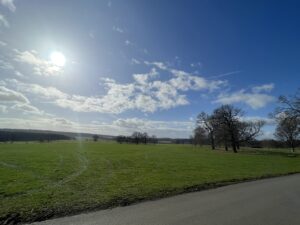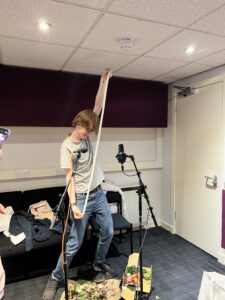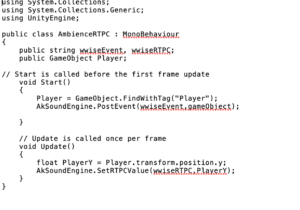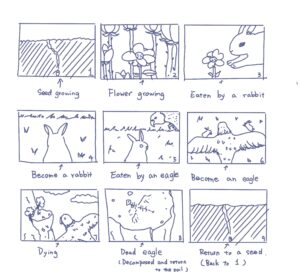Virtual Immersion and VR
Environment design for immersion
The designed goal what achieved in this project with a consistent environment by models. For example, the leaves of the trees with pictorial colour shades and wind swing effects. These effects bring impacts the immersion of this project.
Story and time for immersion
The designed story and time decay change leave a participation experience for players to join the story with virtual space and time immersion, guiding players to understand the virtual role and be involved more in the story character.
Visual effects for immersion
The entire story offered multiple styles for players to experience the story. Examples are the accomplishment of animal animations, particles of special effects, and ending nutrition animation, which brought various types for players to comprehend the immersion of this project.
Sound achievements for immersion
The project provides high-quality sound effects to players that players enable them to listen and sense more realistically from a voice perspective. The sound effects assist the entire effects with more accomplishments.
VR and immersion
Waller et al. (2007) discussed cognition and substantial immersive virtual environment (HIVE) with virtual environment technology head-mounted display (HMD). They mentioned that virtual environments (VE) could provide conditions: the three dimensions and first-person perspective. Also, they researched the devices to wear the HMD to analyse the body movement information and orientation in a virtual environment. Waller et al. (2007) also discussed the concept of immersion with HIVE from the device’s display resolution, overlapping rate, headphone, and lightweight aspects.
In this group project, a VR device is to be used as a primary way to express the concept of presence. The project mainly used Oculus Rift, a total resolution of 2160 x 1200 with a 90Hz refresh rate, and it is wearable with a weight of around 470g(Willings,2016). It does not include the self-render system, which could use a laptop to render. However, this function provides a remarkable render condition for this project because the high plant render resolution requirement caused the computer lagging problem.
This group project has not achieved providing the movement function for players, which the VR’s tracking function has not been used. But the first-person render perspective with a three-dimension environment is also built to assist the immersion effects and implementation.
Presence and absence
This project was designed to reach the aim of the concept of presence, which could provide the presence of a digital forest as a tree and participate in the tree’s virtual growing stages. Kundalakesi et al. (2017) discussed the concept of presence is about two concepts which are relative to virtual reality technology “sight” and “sound”, and they mentioned the idea of “being” the immersive environment for the concept of presence. In this project, the presence represents exploring the digital forest environment with the VR technology devices by both visual information and sound and participating in the story, which also provides immersive participation for the virtual world to guide players in the virtual “character”. As the opposite concept of the present, this project designed the virtual world that aims to be a tree which could not be experienced in the real world. Also, participating in the project is the experience that players to be a plant rather than humans. Thinking from a tree’s perspective is designed as the “absence” from the real world.







